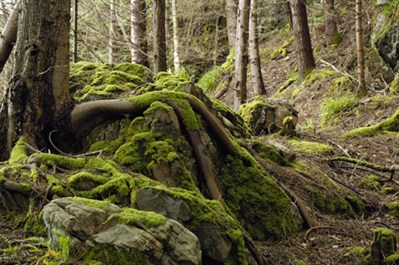Is it better to start a perennial garden with young
plants or more mature plants?
Where is a good place to buy perennials, locally or
through a catalog? I'm looking for some rather unusual plants this
year, and some that are supposed to be natives -- some are from a
list you used at a talk I attended recently. - A.Z. -
The "best" size depends on what your aims are for the particular
project. For some of our clients it's best to start with large
plants because the garden must look full right away since the
owners have a tendency to stuff more plants into any inter-plant
space, which can ruin the design and all the plants' chances of
growing well.
At other times, that large plant is best because it's going into
a garden otherwise full of mature plants. The newcomer has to be
tall enough to keep its head up out of the shade of its
neighbors.
Sponsor this
topic!
Most often in our own garden, small is better because young
plants will reconfigure their root system more quickly to adapt to
the garden soil, and spread their new leaves gracefully into the
light as it falls here.
As for buying plants -- a lot of good can come to those who
enjoy the thrill of the hunt. With that thrill we can maintain
enthusiasm from first glimpse of a promising new plant, through
looking into cultural facts and finding a suitable site in our
garden. In naturalized gardens, which have fewer but more carefully
placed species, we may spend more time planning for a new plant
than we spend in the garden.
We've met gardeners who enjoy the stimulation so much that they
even like to prolong it. They claim it's part of the fun to search
for a place to buy that plant. Their quarry seems to gain rarity
points every time a garden center person says "Sorry" or another
catalog fails to list the elusive gem.
Count us out of that group. Once sold on a new plant, we want it
in hand and in the ground forthwith.
The appeal of "natural" includes
a preference for plants taking care of themselves. For that to
happen, choose fewer species but choose them with more care for
their ability to thrive in that site. Native species can be great
for this.

About those native plants. They are harder to find than exotics,
but the situation's getting better every year. Used to be that we'd
grind my teeth while seeking them, because we so often heard, "We
don't grow THAT! Why not plant a (fill in an overused European
species here) instead?"
After years of searching for one after another unusual species
or rarely-grown native, we've learned some short cuts. Here's the
search procedure that's evolved. We hope it saves you time,
too.
Start with the full botanical name of the sought-after plant(s).
Don't leave home or open a catalog without it, since even a minor
difference in plant name can translate into big differences in
leaf, flower, form, or size.

Begin at a local
garden center, any one you normally shop which carries a good
variety of annuals and perennials as well as shrubs and trees. Plymouth
Nursery in Plymouth, Ray Wiegand's Nursery in Macomb, Bordine
Nursery in Clarkston or Rochester, Telly's Gardens in Troy or
Utica, Specialty Growers in Howell are a few of our starting points
-- see our Recommended Sources list for more.
If that garden center doesn't carry what you seek, ask who might.
Garden center employees know a surprising amount about who sells
what, and are often willing to share that information. The
willingness stems from garden center managers who have learned how
loyal their customers are. They know that if we're treated well --
which includes assistance in plant searches -- we'll be back!
I make that first foray in person. The staff may not recognize
my name or my voice on the phone, but they recognize the face of a
"regular" -- someone deserving of that little extra help. For the
next steps I use the telephone, checking for the plant at other
local garden centers.
If local sources fail, and that's not often any more! -- it's
time to use Minnesota Landscape Arboretum's Andersen Horticultural
Library's Source List. It's at http:plantinfo.umn.edu
Many of the mail order nurseries we recommend on our Recommended
Sources List first came to our attention via the Minnesota/Andersen
list.